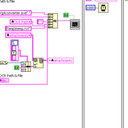Separation of flavonoids from Millettia griffithii with high-performance counter-current chromatography guided by anti-inflammatory activity.
Palabras clave
Abstracto
Millettia griffithii is a unique Chinese plant located in the southern part of Yunnan Province. Up to now, there is no report about its phytochemical or related bioactivity research. In our previous study, the n-hexane crude extract of Millettia griffithii revealed significant anti-inflammatory activity at 100 μg/mL, inspiring us to explore the anti-inflammatory constituents. Four fractions (I, II, III, and A) were fractionated from n-hexane crude extract by high-performance counter-current chromatography with solvent system composed of n-hexane/ethyl acetate/methanol/water (8:9:8:9, v/v) and then were investigated for the potent anti-inflammatory activity. Fraction A, with the most potent inhibitory activity was further separated to give another four fractions (IV, V, VI, and B) with solvent system composed of n-hexane/ethyl acetate/methanol/water (8:4:8:4, v/v). Compound V and fraction B exhibited remarkable anti-inflammatory activity with nitric oxide inhibitory rate of 80 and 65%, which was worth further fractionation. Then, three fractions (VII, VIII, and IX) were separated from fraction B with a solvent system composed of n-hexane/ethyl acetate/methanol/water (8:1:8:1, v/v), with compound VIII demonstrating the most potent inhibitory activity (80%). Finally, the IC50 values of compound V and VIII were tested as 38.2 and 14.9 μM. The structures were identified by electrospray ionization mass spectrometry and(1)H and (13)C NMR spectroscopy.



